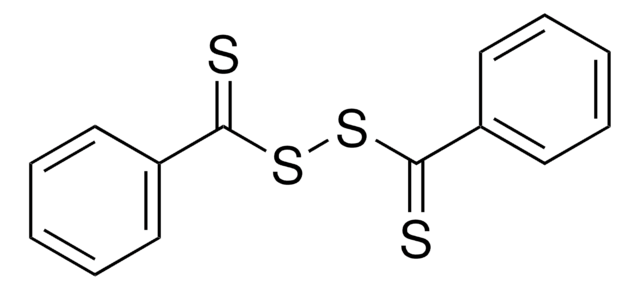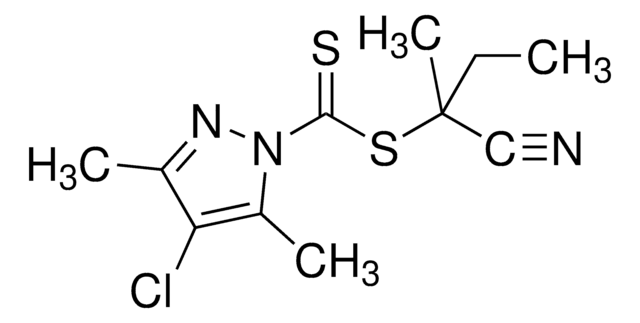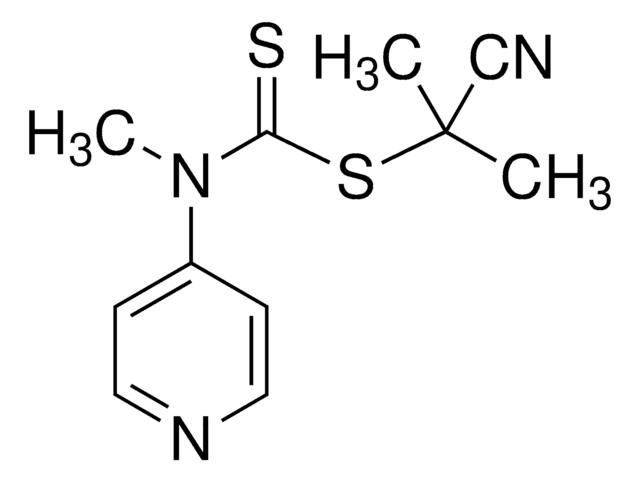About This Item
おすすめの製品
アッセイ
>97% (HPLC)
形状
solid or liquid
屈折率
n20/D 1.621
mp
28-31 °C
密度
1.146 g/mL at 25 °C
保管温度
2-8°C
SMILES記法
CC(C)(SC(=S)c1ccccc1)C#N
InChI
1S/C11H11NS2/c1-11(2,8-12)14-10(13)9-6-4-3-5-7-9/h3-7H,1-2H3
InChI Key
IDSLBLWCPSAZBL-UHFFFAOYSA-N
関連するカテゴリー
詳細
シグナルワード
Warning
危険有害性情報
危険有害性の分類
Skin Sens. 1
保管分類コード
10 - Combustible liquids
WGK
WGK 3
引火点(°F)
>230.0 °F - closed cup
引火点(℃)
> 110 °C - closed cup
適用法令
試験研究用途を考慮した関連法令を主に挙げております。化学物質以外については、一部の情報のみ提供しています。 製品を安全かつ合法的に使用することは、使用者の義務です。最新情報により修正される場合があります。WEBの反映には時間を要することがあるため、適宜SDSをご参照ください。
毒物及び劇物取締法
劇物
Jan Code
722987-5G:4548173299563
722987-VAR:
722987-BULK:
722987-1G:4548173299556
この製品を見ている人はこちらもチェック
資料
Evaluation of RAFT Agents
A series of polymerization were carried out using RAFT agents and monomers yielding well-defined polymers with narrow molecular weight distributions. The process allows radical-initiated growing polymer chains to degeneratively transfer reactivity from one to another through the use of key functional groups (dithioesters, trithiocarbonates, xanthates and dithiocarbamates). RAFT agents help to minimize out-of-control growth and prevent unwanted termination events from occurring, effectively controlling polymer properties like molecular weight and polydispersity. RAFT agents are commercially available. RAFT does not use any cytotoxic heavy metal components (unlike ATRP).
RAFT (Reversible Addition Fragmentation chain Transfer) polymerization is a reversible deactivation radical polymerization (RDRP) and one of the more versatile methods for providing living characteristics to radical polymerization.
RAFT (Reversible Addition Fragmentation chain Transfer) polymerization is a reversible deactivation radical polymerization (RDRP) and one of the more versatile methods for providing living characteristics to radical polymerization.
プロトコル
RAFT (Reversible Addition-Fragmentation chain Transfer) is a form of living radical polymerization involving conventional free radical polymerization of a substituted monomer in the presence of a suitable chain transfer (RAFT) reagent.
Sigma-Aldrich presents an article about RAFT, or Reversible Addition/Fragmentation Chain Transfer, which is a form of living radical polymerization.
ライフサイエンス、有機合成、材料科学、クロマトグラフィー、分析など、あらゆる分野の研究に経験のあるメンバーがおります。.
製品に関するお問い合わせはこちら(テクニカルサービス)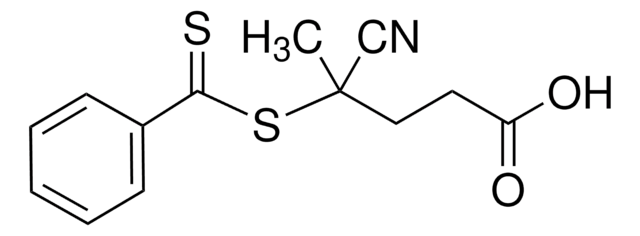
![4-シアノ-4-[(ドデシルスルファニルチオカルボニル)スルファニル]ペンタン酸 97% (HPLC)](/deepweb/assets/sigmaaldrich/product/structures/204/925/30ae6ca0-5b0b-4963-a061-7e5e3d1a85af/640/30ae6ca0-5b0b-4963-a061-7e5e3d1a85af.png)


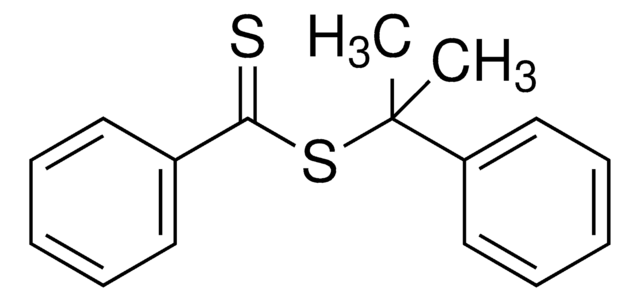

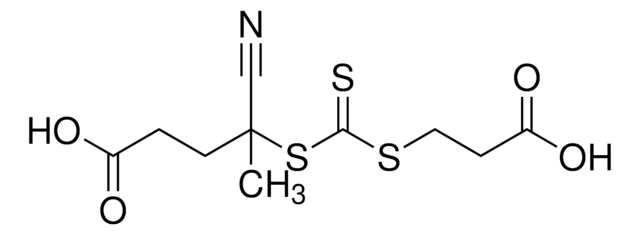
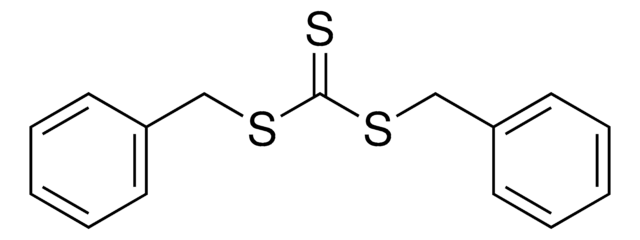
![4-シアノ-4-[(ドデシルスルファニルチオカルボニル)スルファニル]ペンタノール](/deepweb/assets/sigmaaldrich/product/structures/839/520/64c23004-f340-460f-a379-8670a35d0433/640/64c23004-f340-460f-a379-8670a35d0433.png)



